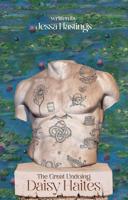Publisher's Synopsis
Excerpt from Some Essays on Golf-Course Architecture
I recently left the neighbourhood of Sunningdale, and as I thought, of golf-courses, to live far away from any large town, and in the midst of an intensely rural district. After spending nearly twenty years in the closest connection with the game, I thought that it would perhaps be a relief to have my home far removed from the Sight and sound of it, so that it might be possible to emerge from home fresh and keen for my work as a golf-course architect. But I very soon realised on a fine Sunday afternoon that the joy of life was not complete. There was a craving for my usual game round the vinley Forest course, and then I made a few inquiries, and to my surprise discovered, almost at my door a very delightful g-hole course. When I came to live In the neighbourhood I had never even heard of it, but now I know that it is an impossibility in this country to get away from the game, or for many to be deprived of it without severely feeling the loss.
France is quickly adopting golf as her national game. It is only a few years ago that it was unknown in that country except at a few holiday resorts, and now we find that one of the Paris clubs has a membership of over a thousand. Spain is becoming enthusiastic, and at Madrid there is a club with over 600 members.
The progress made in America is well known, but to me it was a surprise in 1913, when I paid my second visit to the United States, to hear that in the neighbourhood of Chicago there were between thirty and forty courses.
About the Publisher
Forgotten Books publishes hundreds of thousands of rare and classic books. Find more at www.forgottenbooks.com
This book is a reproduction of an important historical work. Forgotten Books uses state-of-the-art technology to digitally reconstruct the work, preserving the original format whilst repairing imperfections present in the aged copy. In rare cases, an imperfection in the original, such as a blemish or missing page, may be replicated in our edition. We do, however, repair the vast majority of imperfections successfully; any imperfections that remain are intentionally left to preserve the state of such historical works.
























